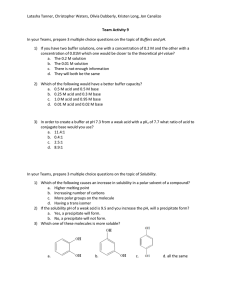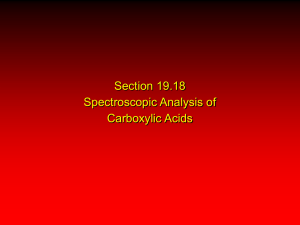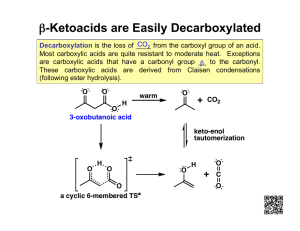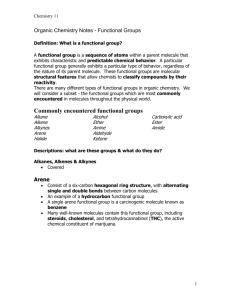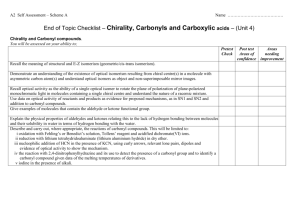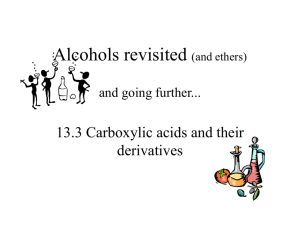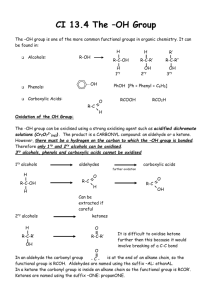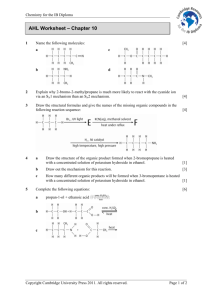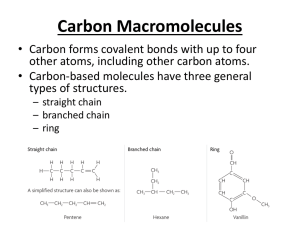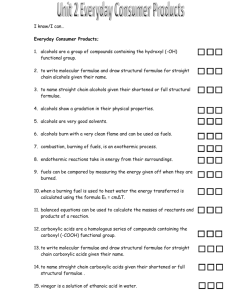File - BSAK Chemistry weebly
advertisement
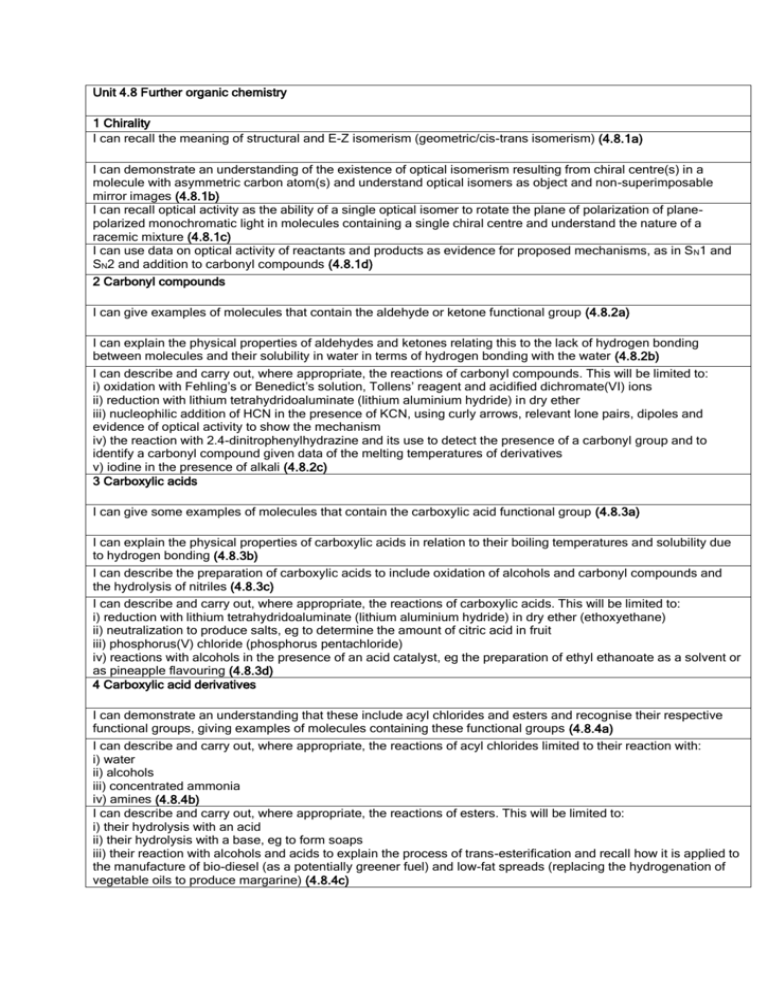
Unit 4.8 Further organic chemistry 1 Chirality I can recall the meaning of structural and E-Z isomerism (geometric/cis-trans isomerism) (4.8.1a) I can demonstrate an understanding of the existence of optical isomerism resulting from chiral centre(s) in a molecule with asymmetric carbon atom(s) and understand optical isomers as object and non-superimposable mirror images (4.8.1b) I can recall optical activity as the ability of a single optical isomer to rotate the plane of polarization of planepolarized monochromatic light in molecules containing a single chiral centre and understand the nature of a racemic mixture (4.8.1c) I can use data on optical activity of reactants and products as evidence for proposed mechanisms, as in S N1 and SN2 and addition to carbonyl compounds (4.8.1d) 2 Carbonyl compounds I can give examples of molecules that contain the aldehyde or ketone functional group (4.8.2a) I can explain the physical properties of aldehydes and ketones relating this to the lack of hydrogen bonding between molecules and their solubility in water in terms of hydrogen bonding with the water (4.8.2b) I can describe and carry out, where appropriate, the reactions of carbonyl compounds. This will be limited to: i) oxidation with Fehling’s or Benedict’s solution, Tollens’ reagent and acidified dichromate(VI) ions ii) reduction with lithium tetrahydridoaluminate (lithium aluminium hydride) in dry ether iii) nucleophilic addition of HCN in the presence of KCN, using curly arrows, relevant lone pairs, dipoles and evidence of optical activity to show the mechanism iv) the reaction with 2.4-dinitrophenylhydrazine and its use to detect the presence of a carbonyl group and to identify a carbonyl compound given data of the melting temperatures of derivatives v) iodine in the presence of alkali (4.8.2c) 3 Carboxylic acids I can give some examples of molecules that contain the carboxylic acid functional group (4.8.3a) I can explain the physical properties of carboxylic acids in relation to their boiling temperatures and solubility due to hydrogen bonding (4.8.3b) I can describe the preparation of carboxylic acids to include oxidation of alcohols and carbonyl compounds and the hydrolysis of nitriles (4.8.3c) I can describe and carry out, where appropriate, the reactions of carboxylic acids. This will be limited to: i) reduction with lithium tetrahydridoaluminate (lithium aluminium hydride) in dry ether (ethoxyethane) ii) neutralization to produce salts, eg to determine the amount of citric acid in fruit iii) phosphorus(V) chloride (phosphorus pentachloride) iv) reactions with alcohols in the presence of an acid catalyst, eg the preparation of ethyl ethanoate as a solvent or as pineapple flavouring (4.8.3d) 4 Carboxylic acid derivatives I can demonstrate an understanding that these include acyl chlorides and esters and recognise their respective functional groups, giving examples of molecules containing these functional groups (4.8.4a) I can describe and carry out, where appropriate, the reactions of acyl chlorides limited to their reaction with: i) water ii) alcohols iii) concentrated ammonia iv) amines (4.8.4b) I can describe and carry out, where appropriate, the reactions of esters. This will be limited to: i) their hydrolysis with an acid ii) their hydrolysis with a base, eg to form soaps iii) their reaction with alcohols and acids to explain the process of trans-esterification and recall how it is applied to the manufacture of bio-diesel (as a potentially greener fuel) and low-fat spreads (replacing the hydrogenation of vegetable oils to produce margarine) (4.8.4c) I can demonstrate an understanding of the importance of the formation of polyesters and describe their formation by condensation polymerization of ethane-1,2-diol and benzene-1,4-dicarboxylic acid (4.8.4d)
